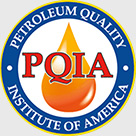2018 was a banner year for oil and gas and while the industry may slow a little bit in 2019, its still poised to see growth.
In 2018, oil production in the United States averaged about 10.8 million barrels per day (B/D). In November, production went as high as 11.6 million B/D, the highest in the world. The U.S. ended 2018 as the world’s largest oil producer and shattered its previous record highs.
“It was a combination of more drilling and unexpected improvements in process and technology,” Dean Foreman, Chief Economist for the American Petroleum Institute (API) said. “The efficiency of the industry and the efficacy at which it is producing continues to exceed expectations. (The industry is) learning how to optimize its operations from a process standpoint. Tying in infrastructure, drilling parent and child wells, using learning process to target what wells they are completing and how we’re doing it. We are using analytics much more than we have previously.”
Related: New Oil Classification, New Tech, Changing Automotive Landscape Define 2018
Foreman said it is unlikely U.S. oil industry will see the kind of growth it did last year. However, he is still optimistic about continuing growth in 2019, especially as imports continue to remain at record lows.
“It’s not the same quantum, we aren’t going to see another 2 million barrels of growth like we did last year,” Foreman said. “But it’s going to grow. In 2018 the U.S. supplied virtually all global oil demand growth and its poised to do that again in 2019. We’re optimistic despite what appear to be significant headwinds and challenges.”
While drilling has slowed, a large number of drilled but uncompleted wells, or DUCs, position the industry to continue moving forward. With as many as 8,700 DUCs, Foreman estimated the industry could go up to seven months without drilling and still have supply. The bigger challenge comes not from extracting the oil but transporting it. Booming business in the Permian Basin and Bakken Formation have strained industry infrastructure.
“Right now, we have significant infrastructure constraints in the Permian basin and the Bakken formation,” Foreman said. “Some of the pipelines that are coming will alleviate that. In the meantime, we are using a lot of rail and trucking to try and get production to market. To really get the most out of 2019 we need the infrastructure and the trade concerns to clear.”
On a larger scale, a volatile global market and Pending trade deals are also complicating manners for U.S. oil producers.
“I think the biggest thing people will look for is whether a trade deal will be reached with China,” Foreman said. “Second to that is the ratification of the U.S.-Canada-Mexico trade agreement. If those move forward it will reinforce the global trade cooperation that has been a source of prosperity over the last two or three decades.”
While those issues are concerning, Foreman is confident the oil industry in the U.S. will continue to grow and that growth will continue to have a positive impact beyond just major oil producers.
“There is a pervasive and important economic impact that has gone with the energy revelation in the U.S., not just in the drilling but everything downstream,” Foreman said. “We are seeing petrochemicals and energy intensive industry coming back. As that happens, the question is how do you keep that investment going.”




